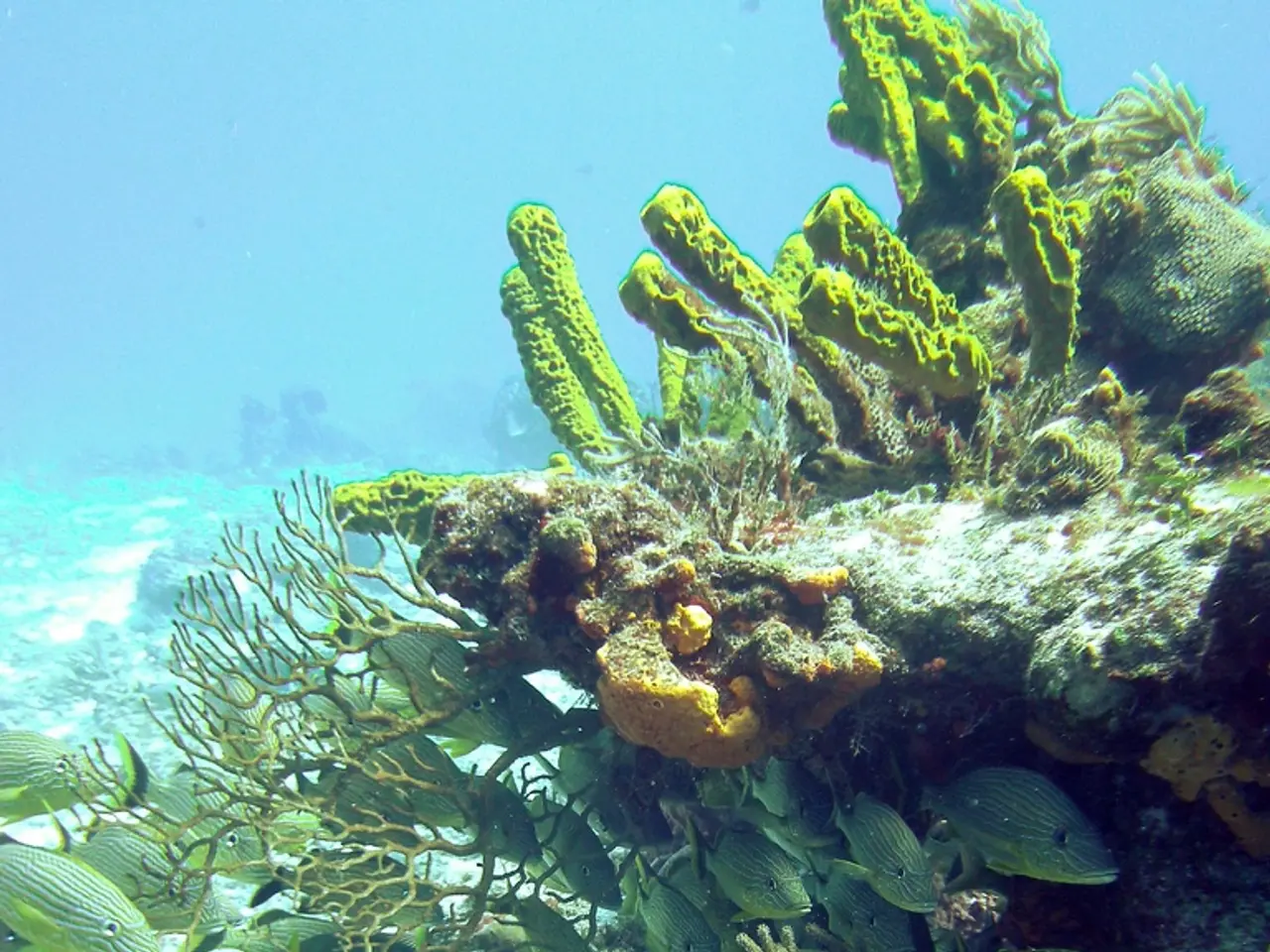New ocean simulation system rolled out by NOAA for the Western coast and Alaska region
The National Oceanic and Atmospheric Administration (NOAA) has developed a cutting-edge high-resolution ocean model, marking a significant stride in understanding and predicting ocean changes along the U.S. West Coast. This innovative model, part of the Changing Ecosystems and Fisheries Initiative, is set to provide valuable insights into the complex interactions between ocean conditions and ecosystems.
The model, stretching from the Baja Peninsula to the Bering Sea, simulates ocean conditions based on atmospheric factors such as winds and air temperatures, as well as changes in Pacific and Arctic ocean circulation. This comprehensive coverage offers a unified outlook on ocean conditions across the West Coast, providing actionable information on seasonal to multi-decadal time horizons.
One of the key features of the model is its high-resolution simulation, allowing for detailed analysis of ocean dynamics and their impact on ecosystems. By incorporating atmospheric conditions and oceanic factors, the model offers a holistic understanding of oceanic changes. This integration is crucial for predicting future ocean conditions and supporting the development of sustainable fishing practices.
The model is expected to greatly aid in improving fisheries management. It generates data that can be used to inform management decisions, helping to mitigate the impacts of oceanic changes on fisheries and ecosystems. By understanding future ocean conditions, communities can prepare for potential disruptions, such as marine heatwaves or harmful algal blooms, which can impact fisheries.
The model has already been evaluated for sablefish, petrale sole, and northern yellowtail rockfish stock assessments by researchers from NOAA and academic partners. Dr. Kirstin Holsman expresses encouragement about the model's ability to replicate past ocean features involved in fisheries changes, such as the snow crab collapse.
Understanding past changes is important, but the ultimate goal is to anticipate future changes to inform fisheries and ecosystem decisions. The West Coast model focuses on critical features such as bottom temperature and oxygen levels, which are not well-resolved in global ocean prediction systems.
The development team used trawl survey and mooring data to assess and improve the model, leading to an accurate simulation of variations in key features like the size of the cold pool in the Bering Sea. The model's capabilities could help improve understanding of fisheries off Washington, Oregon, and California.
This initiative aligns with the broader effort to monitor and predict ocean changes, as seen in other models like the Global RTOFS High Resolution Oceanic Model. Efforts have turned to generating seasonal outlooks for the West Coast model, with regular seasonal forecasts expected to start in 2026.
NOAA's new ocean model is a critical tool for understanding and managing the complex interactions between ocean conditions and ecosystems, ultimately supporting the resilience of coastal communities and industries. The model's development is a testament to NOAA's commitment to advancing ocean science and supporting sustainable fisheries management.
- The Changing Ecosystems and Fisheries Initiative, spearheaded by the National Oceanic and Atmospheric Administration (NOAA), utilizes science and technology to simulate ocean conditions, enabling insights into the impact of climate-change on fisheries management.
- This high-resolution ocean model, advancing environmental-science, extends from the Baja Peninsula to the Bering Sea, incorporating factors like atmospheric conditions and oceanic circulation to offer a comprehensive prediction of ocean changes.
- By providing actionable information on seasonal to multi-decadal time horizons, the model, aided by data-and-cloud-computing, offers a significant stride in supporting technology-driven fisheries management strategies.




